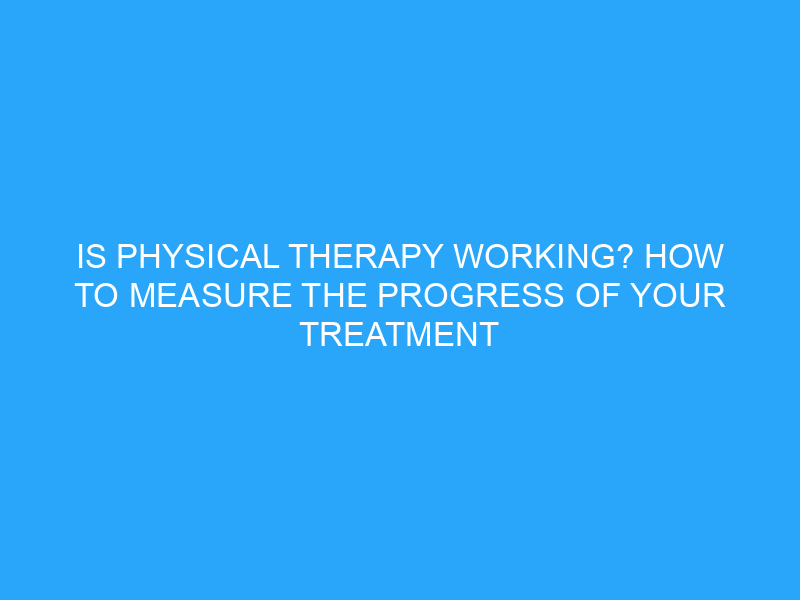Physical therapy is a great way to manage pain, heal an injury, or improve overall strength and function. But if you’ve been in physical therapy for a while, you may be wondering if it’s really doing any good. How can you tell if physical therapy is working and your treatment is achieving the desired results?
In this article, we’ll discuss the different ways you can measure the progress of your physical therapy treatment and determine if it’s working. We’ll also cover the signs that you should look for to tell if physical therapy is helping and answer some frequently asked questions about physical therapy.
Signs That Physical Therapy Is Working
The most obvious sign that physical therapy is working is that you feel better. If you’ve been in physical therapy for an injury, you should start to notice a decrease in pain or stiffness as treatment progresses.
You may also notice a decrease in swelling or improved mobility. If you’ve been in physical therapy for an injury, you should start to see an increase in flexibility, range of motion, and strength.
Finally, you should be able to perform your daily activities more easily. If your physical therapist has recommended certain exercises or activities, you should notice an improvement in your ability to perform them.
Measuring Your Progress
It’s important to measure your progress in physical therapy so you can track your progress over time. Your physical therapist should be able to give you a baseline measurement at the beginning of your treatment, and then monitor your progress from there.
Your physical therapist may use a variety of tests to measure your progress. These may include strength tests, range of motion tests, flexibility tests, balance tests, gait analysis, and more.
They may also use more subjective assessments, such as pain scales. This can help you and your physical therapist get a better understanding of how your treatment is progressing.
Tracking Your Symptoms
In addition to measuring your progress, it’s also helpful to track your symptoms over time. Keeping a symptom diary can help you and your physical therapist understand how your symptoms are changing over the course of your treatment.
Your symptom diary should include any symptoms you’re experiencing, such as pain, stiffness, swelling, or fatigue. You should also include any activities that you’re doing, such as exercise, physical therapy sessions, or other activities.
Making Adjustments
If you’re not seeing the results you’d like from your physical therapy, it may be time to make some adjustments to your treatment plan. Talk to your physical therapist about any changes you’d like to make, such as adding more exercises or activities, increasing the intensity of your treatment, or trying a different approach.
Your physical therapist should be able to work with you to develop a plan that works for you and helps you achieve your goals.
Frequently Asked Questions about Physical Therapy
What is physical therapy?
Physical therapy is a type of treatment that helps to manage pain, heal an injury, or improve overall strength and function. It typically includes exercises and activities that are tailored to your individual needs and goals.
How long does physical therapy last?
The length of your physical therapy treatment will depend on the type and severity of your injury or condition. Some people may only need a few weeks of physical therapy, while others may need several months or more.
What should I expect during physical therapy?
During physical therapy, your physical therapist will work with you to develop an individualized plan of care. This plan may include exercises, activities, and other treatments that are tailored to your specific needs.
How often should I do physical therapy?
The frequency of your physical therapy sessions will depend on your individual needs and goals. Most people will need to attend physical therapy sessions at least two to three times per week.
What are the benefits of physical therapy?
The benefits of physical therapy include improved strength and mobility, reduced pain, increased flexibility, improved balance, and increased overall function.
Conclusion
Physical therapy can be a great way to manage pain, heal an injury, or improve overall strength and function. But if you’re wondering if physical therapy is working, there are several signs you can look for. Your physical therapist can also measure your progress and help you track your symptoms over time. If you’re not seeing the results you’d like, it may be time to make some adjustments to your treatment plan. With the right approach, physical therapy can help you achieve your goals and improve your quality of life.






